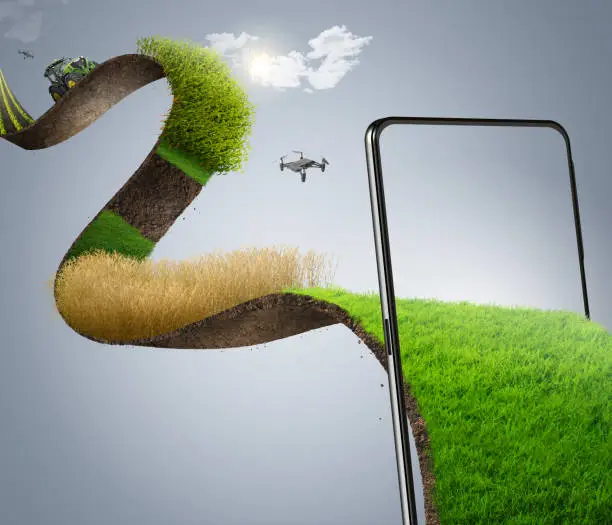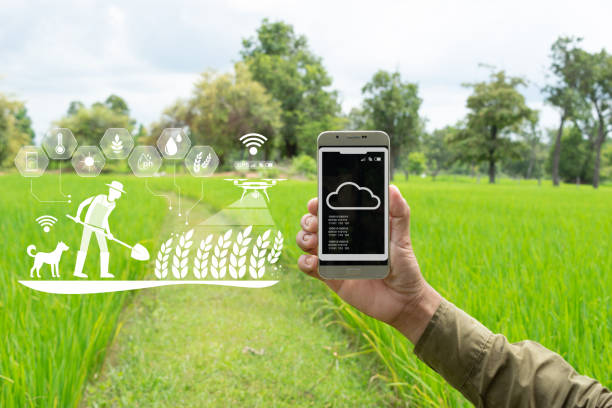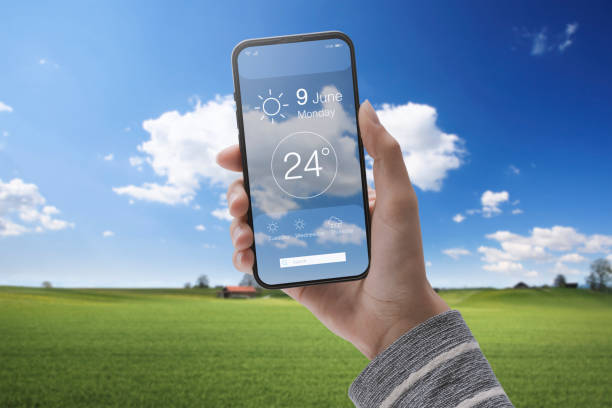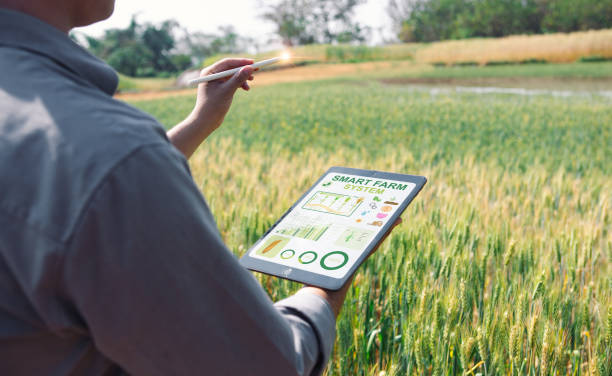The Role of Mobile Apps in Modern Farming

In the past decade, agriculture has witnessed one of the most remarkable shifts in its long history—a move from traditional, manual practices to technology-driven, precision-based farming. While innovations like drones, IoT sensors, and AI analytics are making headlines, one tool has quietly revolutionized the fields of even the smallest farmers: the mobile application.
From providing weather updates to connecting farmers with markets, mobile apps are playing a vital role in modernizing Indian agriculture. Let's explore how these powerful tools are not just supporting farmers—but empowering them.
The Digital Evolution of Agriculture
The rise of smartphone usage in rural India has been a game-changer. Today, over 70% of rural households have access to smartphones and internet services, making digital tools more accessible than ever before. This growing connectivity is giving farmers direct access to knowledge, tools, and networks that were once out of reach.
In this new landscape, mobile apps act as digital assistants—offering real-time support, simplifying complex decisions, and connecting farmers to resources they never had before. Whether a farmer is managing one acre or one hundred, mobile apps are helping them grow more, earn more, and risk less.
Key Functions of Mobile Apps in Modern Agriculture

1. Smart Crop Planning and Scientific Advisory
Traditional farming decisions were often based on intuition or local customs. Now, mobile apps provide scientific guidance and data-based recommendations. These apps analyze soil health, suggest optimal crops, recommend fertilizers, and help farmers schedule sowing and harvesting times.
For instance, a farmer can input their location and soil type into an app and instantly receive crop suggestions suitable for that season, with complete planting and irrigation schedules. This precision planning significantly reduces input waste and improves yield outcomes.
2. Localized Weather Forecasting and Early Warning Alerts
Weather is one of the biggest uncertainties in farming. Even a single unseasonal rain or temperature fluctuation can affect the entire crop. Mobile apps now offer hyperlocal weather forecasts, sometimes down to the village level, giving farmers a heads-up on expected rain, humidity, and temperature changes.
Many apps also integrate pest and disease prediction models, alerting farmers to outbreaks and offering preventive measures. By taking early action, farmers can reduce the need for heavy pesticide use, thereby protecting crops, the environment, and their income.



3. Efficient Farm Management and Digital Record-Keeping
Farmers today are not just cultivators—they are farm managers. Mobile apps make it easy to track every aspect of the farm: expenses, input purchases, water usage, crop performance, and even labor.
- Having digital records helps farmers:
- Evaluate profits and losses more accurately
- Apply for government schemes or subsidies
- Prove creditworthiness for loans
- Improve future planning through data analysis
In short, mobile apps are helping farmers become more organized and professional in managing their farms.
4. Access to Real-Time Market Prices and Direct Buyers
One of the major pain points in Indian agriculture has been the lack of transparency in market prices. Farmers often have to depend on middlemen, leading to unfair pricing and limited profit margins. Now, mobile apps provide live mandi prices from multiple markets, allowing farmers to choose where to sell.
Even better, some platforms directly connect farmers to buyers, exporters, or retailers, cutting out intermediaries. This farm-to-market connectivity increases bargaining power and ensures a better share of the profit for the farmer.
5. Farmer Communities and Peer Learning Platforms
Beyond data and services, many mobile apps are building social networks for farmers. These community spaces allow users to:
- Share photos of crop issues and get instant advice
- Discuss local market conditions
- Learn from other farmers’ techniques and innovations
- Participate in training modules and video tutorials
This kind of peer-to-peer learning strengthens community bonds and helps farmers stay updated with evolving practices.

The Road Ahead: Tech-Enabled, Sustainable Agriculture
As mobile apps integrate with emerging technologies like AI, satellite imaging, blockchain, and IoT, their impact will only grow. We’re heading toward a future where farmers:
- Receive personalized recommendations powered by AI
- Monitor crops in real-time through satellite-linked data
- Use digital tokens for secure produce transactions
- Manage entire supply chains from a mobile device
This is not a dream—it’s the direction we’re heading in, and mobile apps are the driving force behind it.
Conclusion: Empowering Farmers, One App at a Time
In the face of climate challenges, rising costs, and market pressures, farmers need more than hard work—they need smart tools. Mobile apps have emerged as essential companions in the journey toward resilient, profitable, and sustainable agriculture.
By simplifying complex processes and putting information directly in the farmer’s hands, mobile apps are bridging the gap between potential and performance.
At Krishi Kutumb, we are committed to being part of this digital movement. Our platform connects farmers with tools, communities, and insights tailored to their needs.
If you're a farmer, or work in the agri space, don't wait for the future—download the Krishi Kutumb app and be part of it today.